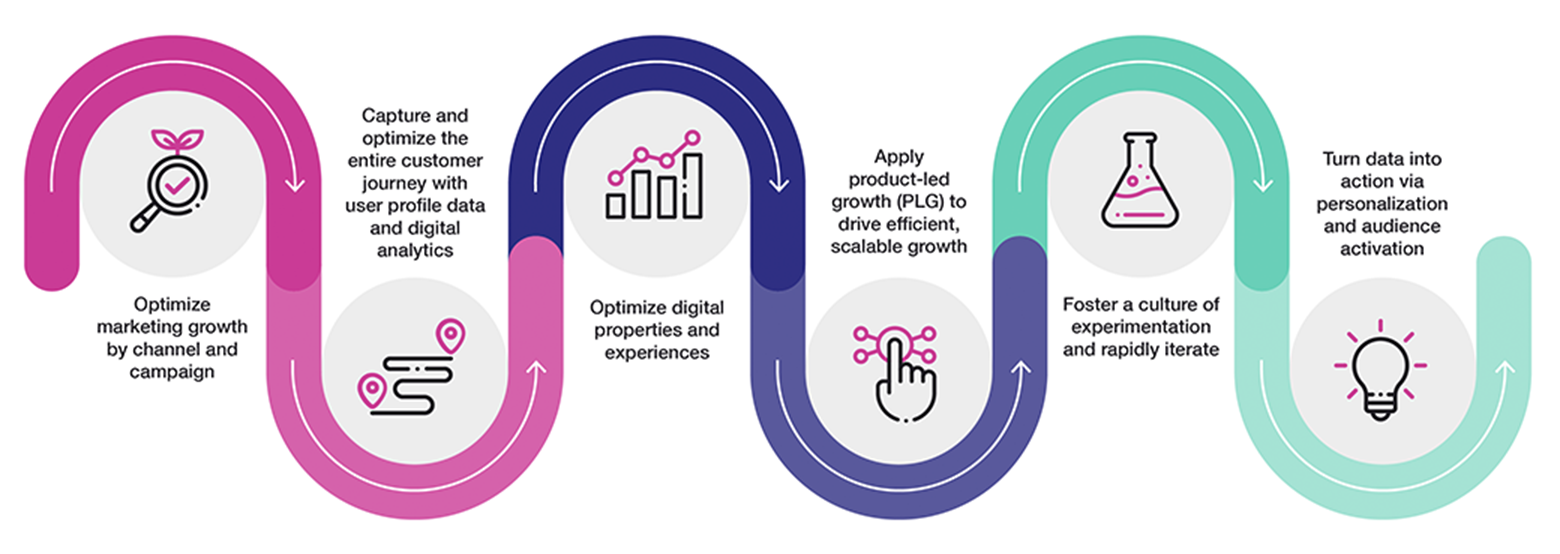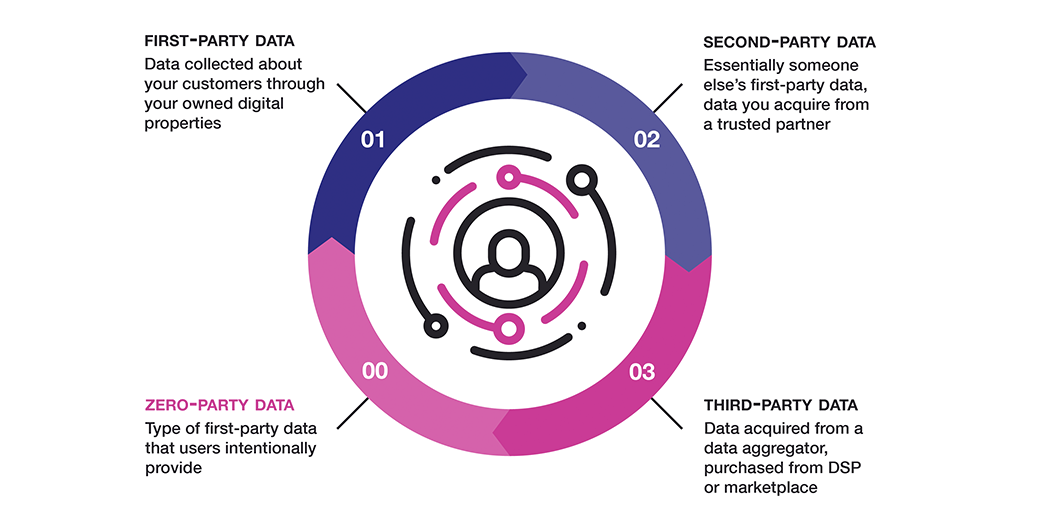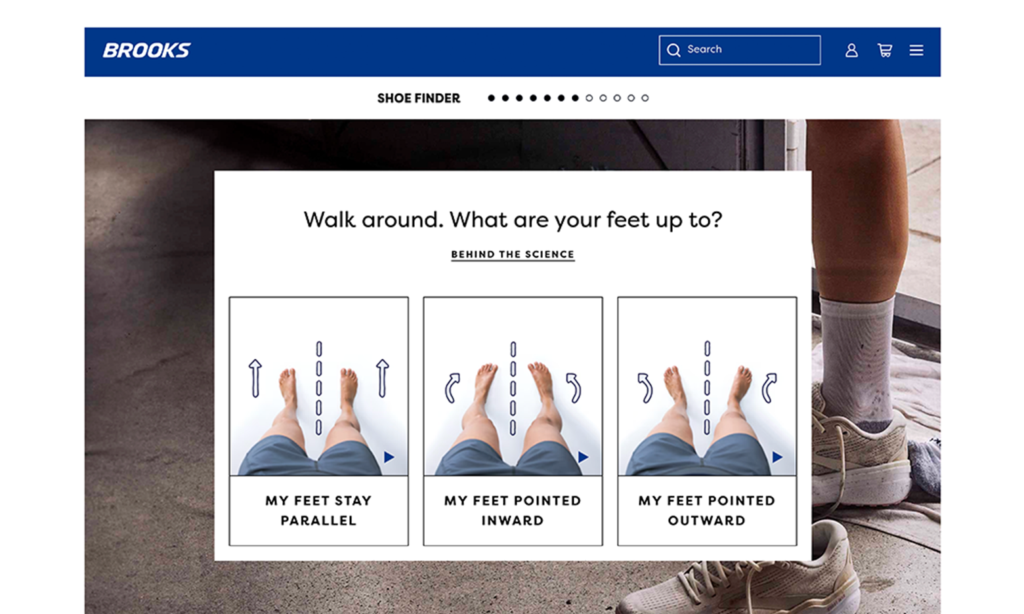From Splashy Ad Campaigns to Data-Driven Change
For decades, marketing was the primary driver of customer growth. Marketing teams crafted product messaging, segmentation strategies, acquisition plans, and more—but that’s an outdated model. We’re taking a look back at our webinar, The Convergence of Marketing-led and Product-Led Growth, in which Adam Greco, Product Evangelist at Amplitude, and myself (Joe Christopher, VP of Technology Solutions at BlastX Consulting) sat down to discuss how product-led growth has emerged as a complement to marketing-led growth and is empowering organizations to find the optimal mix to fuel future success.
With over 35 years of combined experience in digital analytics and MarTech, we’re back to share our insights in writing. Dive into the history of this evolution and learn why organizations are reevaluating their approach to the customer journey. We’ll also provide six actionable steps you can take to help your organization embrace this shift.
Below are the key concepts from the webinar. To go deeper, we encourage you to watch the full on-demand recording for even more powerful insights.
The Marketing Personalization Paradox
The “Marketing Personalization Paradox” highlights the tension between the growing demand for tailored experiences and rising concerns over privacy. As regulations tighten and consumers become more aware of data tracking, marketers face a critical challenge: delivering personalized content without compromising trust. To navigate this paradox, companies must innovate in how they collect, use, and protect data—ensuring they balance privacy with the personalization consumers expect.
Combining Marketing and Product Teams for a Unified Customer Experience
Marketing and product teams have traditionally worked in silos, each chasing their own goals. In today’s digital landscape, this disconnect often results in fragmented customer experiences and missed opportunities. By breaking down silos and integrating their data, businesses can align these teams to create seamless customer journeys. This collaboration enhances both acquisition (marketing) and retention (product), ensuring every interaction meets customer needs and drives loyalty.

Downsides of the Frankenstein Analytics Stack
A “Frankenstein” analytics stack—cobbled together from unintegrated tools—poses serious challenges. While each tool may excel in its niche, the lack of integration creates data silos, conflicting metrics, and a fragmented view of the customer journey. These inefficiencies waste time, undermine trust in the data, and ultimately limit a company’s ability to make smart, data-driven decisions.
6 Steps to Compete in the Data-First Era
1. Capture and Optimize Customer Acquisition
Capturing and optimizing customer acquisition means focusing on more than just driving traffic—it’s about understanding how each channel contributes to growth. By leveraging digital analytics, businesses can identify top-performing channels, calculate Return on Ad Spend (ROAS), and uncover opportunities for refinement. This data-driven approach ensures acquisition efforts attract not just a higher volume of customers, but high-quality, engaged ones who are more likely to convert and stay loyal.
You can leverage digital analytics to track spend on advertising, giving you a view into how your marketing channels and campaigns are impacting growth.
2. Maximize Customer Data to Build Customer Profiles & Journeys
Building comprehensive customer profiles requires aggregating data from multiple sources. Zero-party data (voluntary shared by customers) and first-party data (gathered through direct interactions), as well as second- and third-party data, all play important roles. Together, they create comprehensive customer profiles that enable precise segmentation and personalization. Connecting this data across all touchpoints fosters cohesive customer journeys, creating meaningful and lasting relationships that drive engagement and loyalty.

3. Leverage Digital Analytics to Optimize Digital Products & Experiences
Optimizing digital products and experiences requires a blend of quantitative data and qualitative insights to reveal the full picture of the customer journey. This approach helps businesses pinpoint friction points and their underlying causes, enabling targeted improvements that enhance engagement, boost retention, and elevate the overall user experience.
Organizations that excel at turning digital behavior data into digital product insights and improvements are more likely to win in the long run.
4. Continuously Iterate Marketing & Products Through Experimentation
Continuous experimentation is key to staying competitive. By regularly testing marketing messages, product features, and user experiences, companies can quickly identify what resonates and what falls short. This iterative process enables rapid optimization, ensuring efforts align with evolving customer needs and market trends. These small, data-driven changes, when compounded, can result in significant growth over time.
Experimentation is an example of how digital marketing and products allow you to avoid always swinging for home runs and focus on the “Moneyball” approach of small, data-driven enhancements to drive growth.
5. Complement Marketing-led Growth with Product-led Growth
Marketing-led growth remains vital for acquiring customers, but it’s no longer enough on its own. Product-led growth (PLG) ensures customers remain engaged and loyal. By delivering exceptional product experiences, businesses can drive organic growth through user satisfaction, word-of-mouth, and higher retention rates. This approach optimizes customer acquisition costs and creates a sustainable growth model that balances acquisition and retention.
Marketing lets people know that you’re out there, what your business does, and what your value proposition is—but digital products play a much bigger role in customer loyalty.
6. Take Action on Data Through Personalization & Audience Activation
Personalization and audience activation spin data into highly tailored customer experiences. By segmenting customers into specific cohorts and engaging them with personalized messages or offers, businesses can amplify marketing campaign effectiveness. This targeted approach improves engagement, increases conversions, and fosters long-term loyalty, making data actionable and impactful.

Moving Beyond Traditional Marketing to Data-Driven Growth Strategies
Traditional marketing methods—focused on broad, creative-driven campaigns—no longer suffice in today’s data-centric landscape. To achieve sustainable growth, businesses must adopt data-driven strategies that seamlessly integrate marketing and product insights. By leveraging data at every step, from customer acquisition to product optimization, companies can make more informed decisions, deliver more personalized experiences, and quickly adapt to market changes. This shift not only boosts marketing effectiveness—it ensures every aspect of the customer journey is optimized for growth.
The era of data-driven decision-making has given organizations the power to optimize full customer journeys, build comprehensive user profiles, and leverage data for personalization and experimentation.
Revolutionize the Way Your Organization Approaches Customer Relationships
The convergence of marketing-led and product-led growth represents a fundamental shift in how successful organizations approach customer relationships. This isn’t just about adopting new tools or collecting more data—it’s about seamlessly blending marketing innovation and product excellence to create exceptional customer experiences.
Ready to optimize your growth strategy? Connect with our team at BlastX to develop your roadmap to data-driven success, and explore more insights from Adam Greco on the Amplitude Blog.

